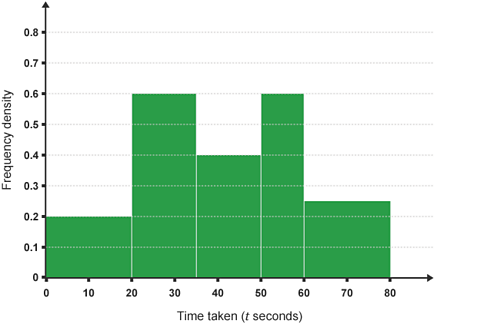Before starting this guide, it may be helpful to read the guide from Module 3 (M3) on perimeter, area and volume involving sectors, cylinders, cones and spheres.
Important formulae
Sector
\(\text{area} = \frac{\theta}{360}\times \pi r^{2}\)
\(\text{arc length} = \frac{\theta}{360}\times \pi d\)
Cylinder
\(\text{volume} = \pi r^{2}h\)
\(\text{curved surface area} = \pi dh\) or \(2 \pi rh\)
It's important to learn the formulae above, as they will not appear on the formula sheet provided with your M4 exam paper.
Cone
\(\text{volume} = \frac{1}{3} \pi r^{2}h\)
\(\text{curved surface area} = \pi rl\)
Sphere
\(\text{volume} = \frac{4}{3} \pi r^{3}\)
\(\text{surface area} = 4 \pi r^{2}\)
The formulae used to calculate the volume and surface area of cones and spheres will appear on the formula sheet provided with your M4 exam paper, but it's still helpful to learn them so you can identify what formula to use easily.
Solving complex problems
Questions in the M4 paper are complex and often involve problem solving.
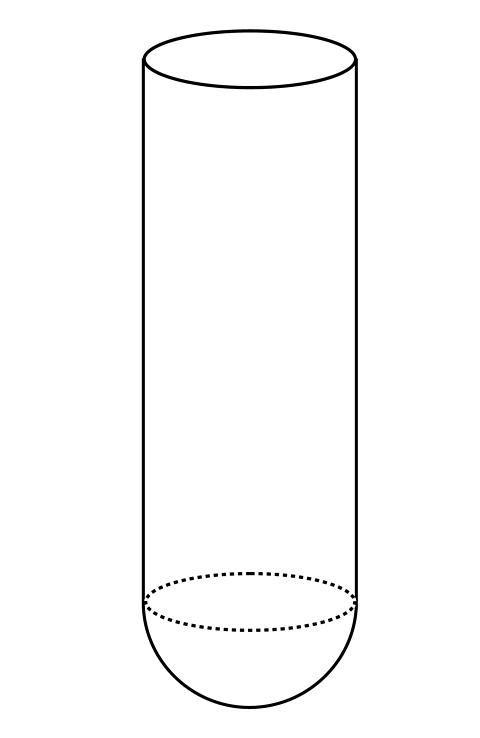
The shape could be a combination of two or more shapes such as a test tube…

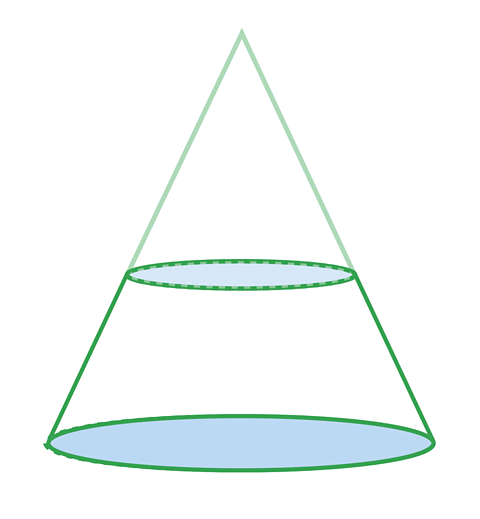
…or a shape with a section removed such as a frustum.

A frustum is simply a BIG cone minus a little cone.
frustum = BIG CONE – little cone
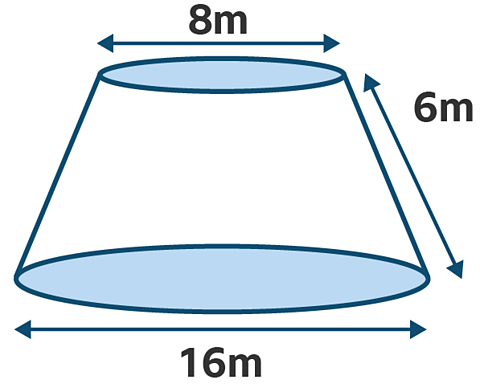
Example
Calculate the total surface area of the solid frustrum.
Give the answer to 2 significant figures.

Solution
Let's imagine the big cone before the little cone was removed.
frustum = BIG CONE – little cone
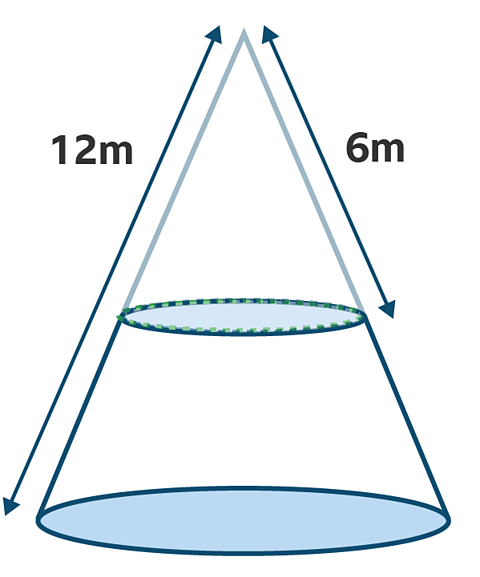
Since the diameter of the big cone is twice the diameter of the little cone then the slant height of the big cone will be twice the slant height of the little cone.
Big cone slant height = 12m
Big cone radius = 8m
Little cone slant height = 6m
Little cone radius = 4m

\(\text{curved surface area of cone} = \pi rl\)
The curved surface area of the frustrum can be found using:
\(\text{frustum} = \pi \times 8 \times 12 – \pi \times 4 \times 6\)
\(\text{frustum} = 96 \pi – 24 \pi = 72 \pi\)
Notice the word solid in the question, meaning the frustum will have a top and a base as well as a curved surface. The top and the base are circles.
\(\text{area of base} = \pi \times 8^{2} = 64 \pi\)
\(\text{area of top} = \pi \times 4^{2} = 16 \pi\)
\(\text{total surface area} = 72 \pi + 64 \pi + 16 \pi = 477.522…\)
Answer
\(\text{total surface area} = 480\text{cm}^{2}\) (to 2 sig figs).
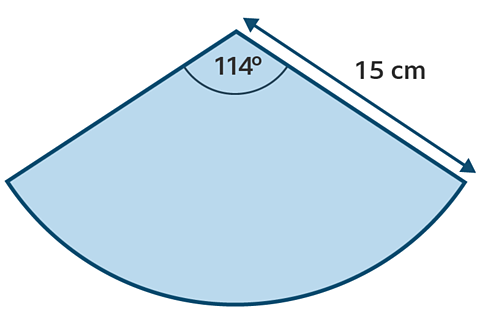
Example
The net of a cone is a sector of a circle with a radius of 15cm.
The angle in the sector is 114°.
Calculate the volume of the cone to the nearest integer.

The radius of the sector becomes the slant height of the cone, \(l\).
To find the volume of the cone, the radius \(R\) is needed.
\(\text{the area of the sector} = \text{curved surface area of the cone}\)
\(\frac{\theta}{360} \times \pi r^{2} = \pi Rl\)
\(\frac{114}{360} \times \pi \times 15^{2} = \pi R \times 15\)
This can be used to calculate \(R\), the radius of the cone.
\(R = \frac{114}{360} \times \pi \times 15^{2} \div 15 \pi \)
\(R = 4.75\text{cm} \)
To calculate the volume of the cone, use \(V = \frac{1}{3} \pi r^{2}h\)

The height, \(h\), is unknown.
\(h\) can be found using Pythagoras' theorem.
\(h = \sqrt{15^{2} – 4.75^{2}} = 14.23\)
\(\text{volume} = \frac{1}{3} \pi r^{2}h\)
\(\text{volume} = \frac{1}{3} \pi \times 4.75^{2} \times 14.23\)
°Ŕ(336.217…\)
Answer
\(\text{volume} = 336\text{cm}^{3}\)
Test yourself
More on M4: Handling data
Find out more by working through a topic
- count1 of 3
